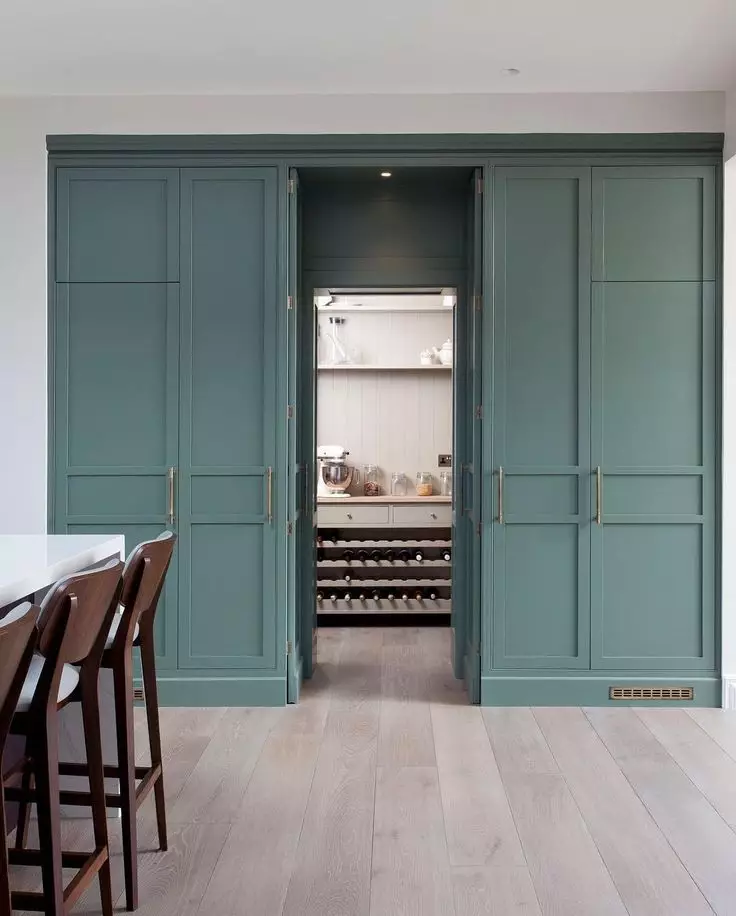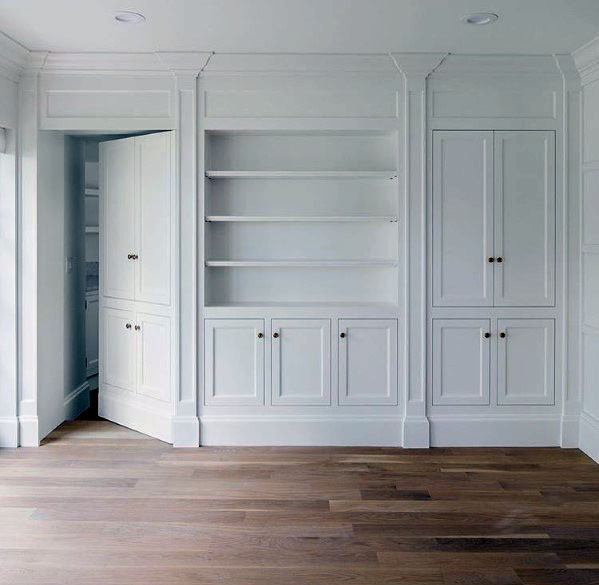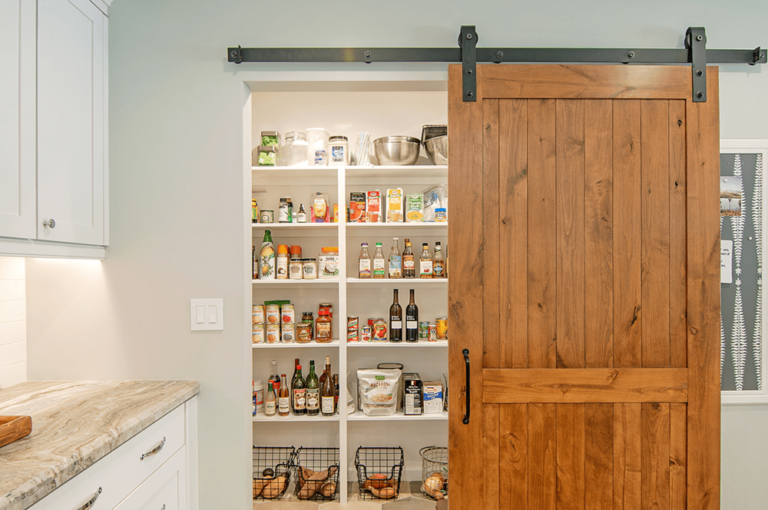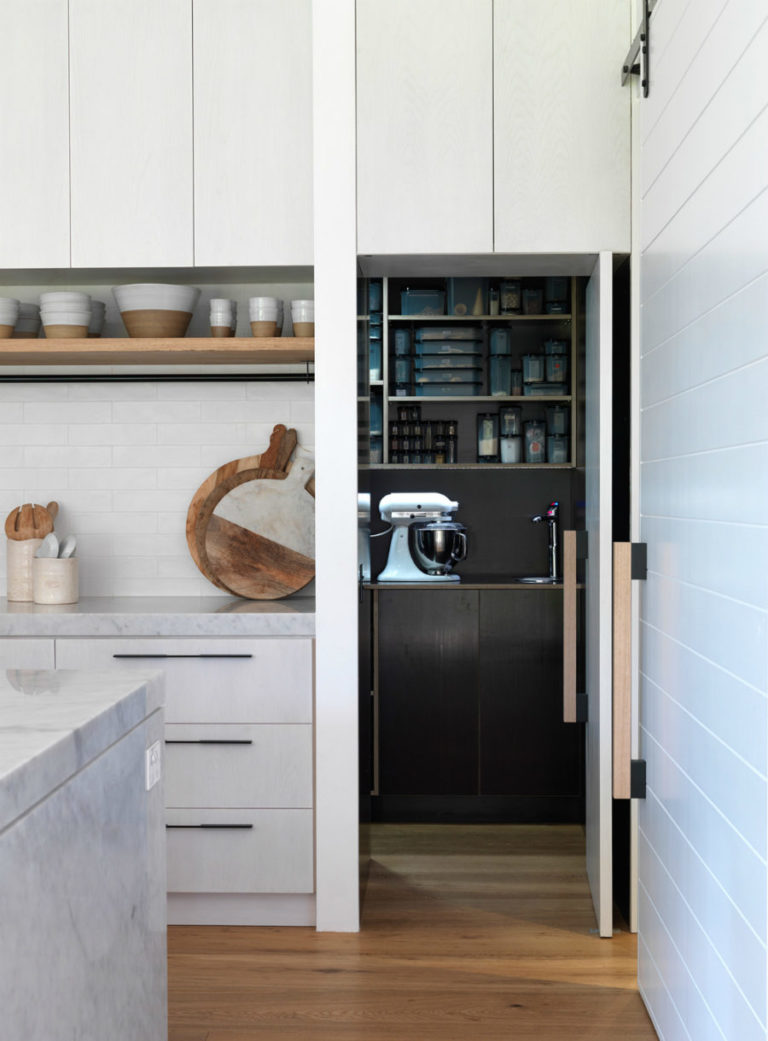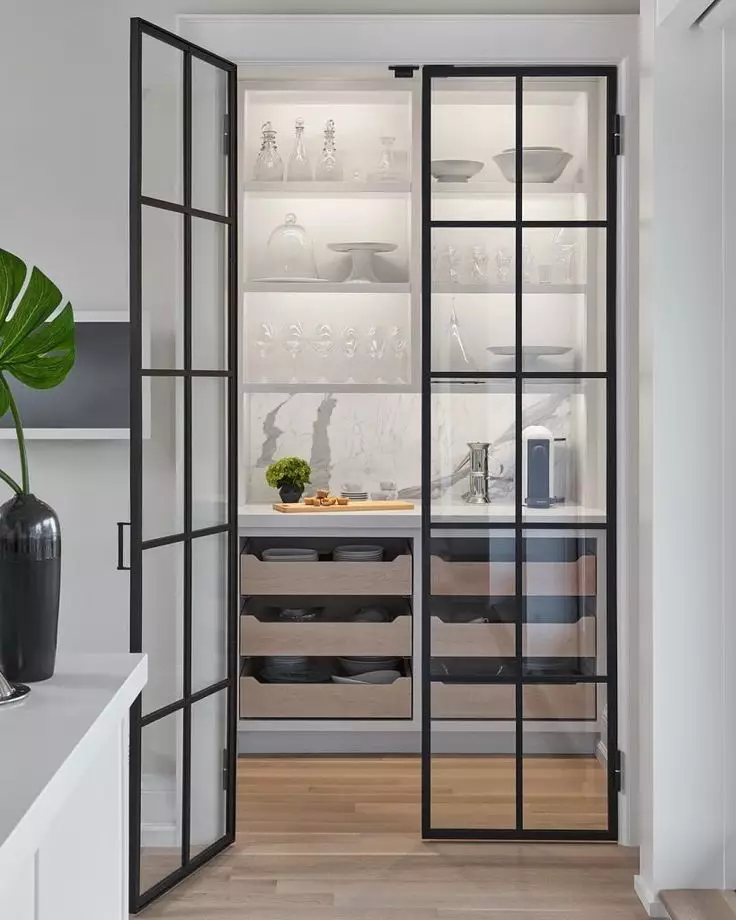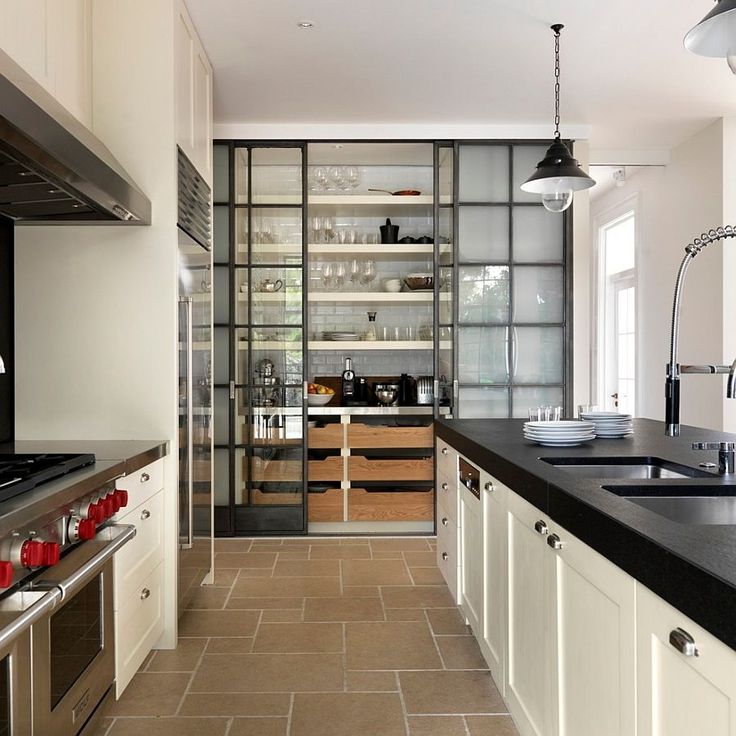
Which option works best in a fairly small pantry? Antique style sliding doors are very fashionable nowadays, mainly used in loft-style interiors. Their decoration is not only the grain visible on the wood but also fittings and rails – most often black. Usually, such partitions are installed in a dressing room, bedroom, or bathroom. This type will also work in the pantry, provided that they are made of wood that is protected from dirt, and match the kitchen furniture and the character of the entire interior.
The sliding pantry door that moves along the wall
This door type goes well with black retro-style cabinet fittings and cornice, as well as household appliances in this color. These doors can be installed alone. They are purchased as a complete set, including a 6.5 feet rail, two rollers with fasteners, stoppers, and other necessary items. Such doors are not only practical but also represent an original interior decoration.
The sliding pantry door that is hidden in the wall
In contrast, sliding pantry doors hidden in the wall after opening are invisible and do not take up space on the wall where they move so that you can place cabinets or appliances along with it. Therefore, this type is a little more practical, especially in small spaces. For a small kitchen, this solution may be more appropriate. Such doors can be made from any material. In the double door version, they also work well in the living room or hallway. You can order them in the same finishes as the traditional doors designed for other interiors in the house. The installation of such doors can be carried out independently or by specialists recommended by their manufacturer.
Sliding pantry doors: Conclusions + Photo gallery
Both types of sliding doors can be used at any construction stage, extension, or home renovation.
With the door hidden in the wall, it is most convenient to use a ready-made cassette. It can be built into a partition wall or added to an existing wall if it cannot be demolished.
Manufacturers offer cassettes in two versions – with or without a frame and masking tapes. Frame systems correspond to classic interiors, non-frame systems are modern. Both types are finished with plasterboard or plaster.



